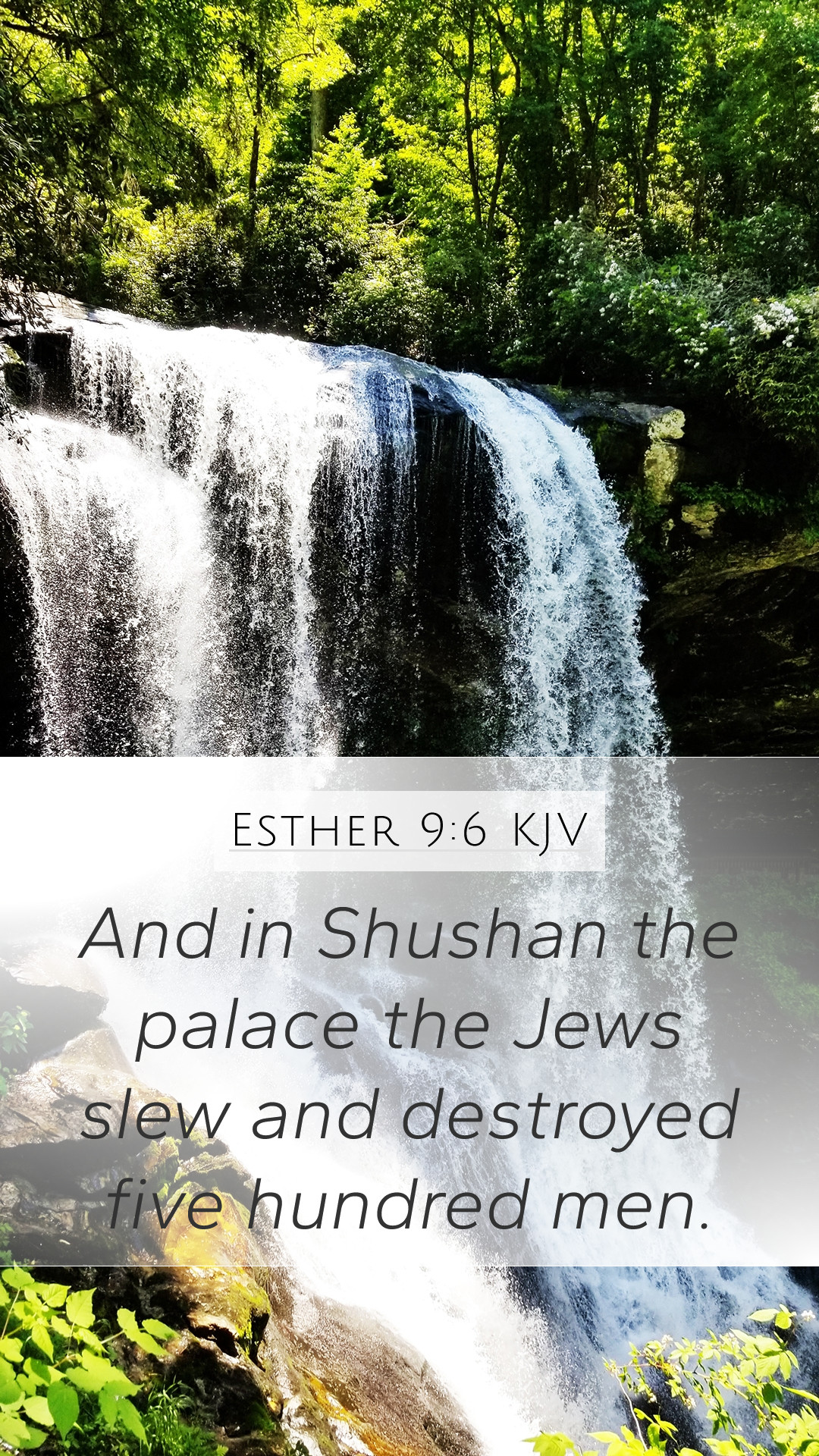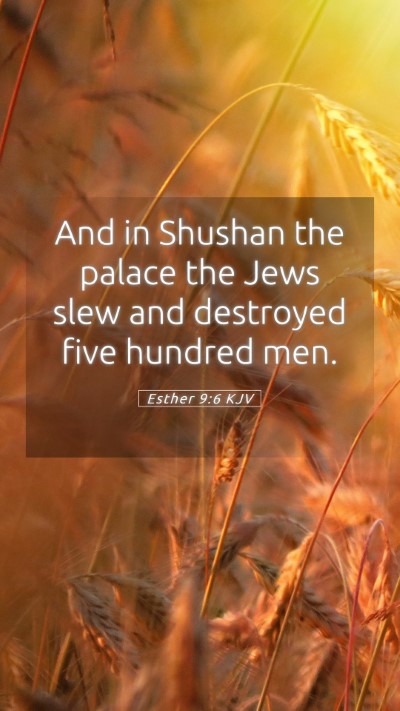Bible Verse Meaning and Commentary for Esther 9:6
Esther 9:6 states: “And in Shushan the palace the Jews killed and destroyed five hundred men.” This verse is critical to understanding the events that unfolded during the Jewish festival of Purim, which commemorates the deliverance of the Jews from Haman's plot to annihilate them. The verse reflects not only the battle that took place but also serves as a significant turning point in the narrative.
Overview of Esther 9:6
The context of Esther 9:6 is rooted in the broader story of Esther, where the Jews find themselves threatened by Haman, enemies within the Persian Empire. This verse signifies a day of triumph for the Jewish people as they defend themselves against those who sought to destroy them.
Key Insights from Public Domain Commentaries
-
Matthew Henry's Commentary: Henry emphasizes that this event demonstrates the righteous judgment of God against the enemies of His people. The verse encapsulates the divine vindication that the Jews received, affirming that vengeance belongs to God, who protects His chosen people.
-
Albert Barnes' Commentary: Barnes provides a detailed examination of the numbers in this verse. He highlights the strategic importance of the capital, Shushan, and how the location amplifies the story's drama. The mention of “five hundred men” illustrates the magnitude of the conflict and the seriousness of the threat posed to the Jewish community.
-
Adam Clarke's Commentary: Clarke offers a rich historical analysis of the cultural implications of this battle. He discusses how the Jews were not only fighting for their lives but also for their identity, which involved turning the tide against oppressors who represented broader themes of evil in the world.
Understanding the Message of Esther 9:6
The passage serves several essential functions in understanding Scripture:
- God's Sovereignty: It illustrates God’s control over the fate of His people, ensuring their survival against those who wished to harm them.
- The Role of Community: The chapter showcases how collective action among the Jewish people leads to their salvation and reinforces the importance of unity in the face of adversity.
- Justice and Retribution: The verse brings forth themes of justice, as the Jews act in self-defense, ultimately fulfilling a divine decree against their enemies.
Applications of Esther 9:6
This verse can be applied in numerous ways in modern life:
- It encourages believers to trust in God’s protection during times of trial.
- It serves as a reminder of the importance of standing against injustice and evil in today’s society.
- Understanding his context helps modern readers appreciate the events leading to the celebration of Purim as a testament to resilience.
Bible Cross References
For a more comprehensive understanding, consider exploring these related verses:
- Esther 3:9: Haman's decree to destroy the Jews.
- Esther 8:11: The permission given to the Jews to assemble and defend themselves.
- Psalms 37:28: The Lord loves justice and does not forsake His saints.
Conclusion
In summary, Esther 9:6 serves as a powerful account of divine protection, communal identity, and the triumph of good over evil. It offers profound bible study insights into the dynamics between oppressors and the oppressed, reflecting God’s unyielding love and justice towards His people.
Understanding this verse aids in grasping the broader themes within the Book of Esther, encouraging deeper Bible verse interpretations, and reinforcing the significance of Bible study in seeking divine truth.


